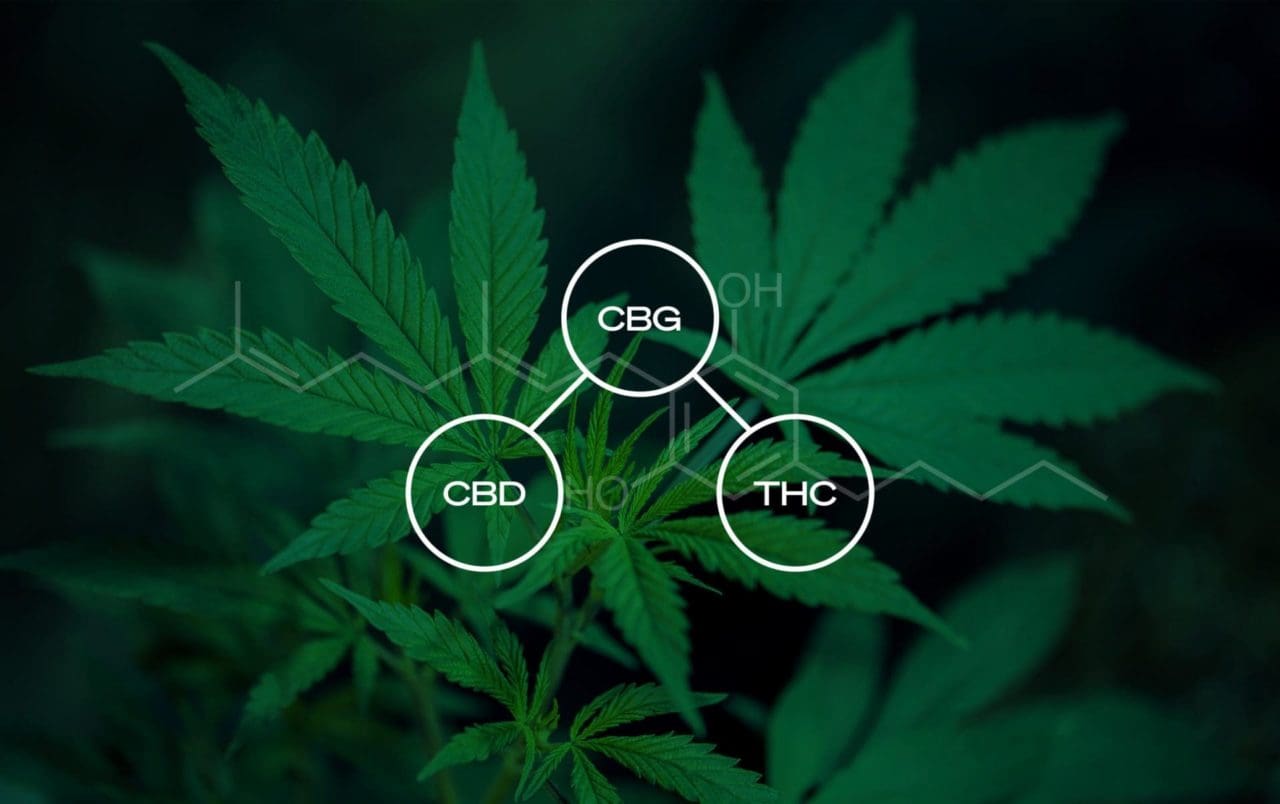What’s the Difference Between CBG and CBD?
3 min read



Both cannabigerol (CBG) and cannabidiol (CBD) are phytocannabinoids (plant cannabinoids), and CBG is a minor cannabinoid not found in large concentrations in the cannabis plant. In contrast, CBD is one of two major cannabinoids found in much higher concentrations in cannabis, alongside tetrahydrocannabinol (THC).
Get Your Medical Card
Connect with a licensed physician online in minutes.
Larger purchase limits Access to higher potency strains Save up to 40% on product taxes Enhanced legal protection
What Is CBG?
CBG is the decarboxylated version of cannabigerolic acid (CBGA). In the cannabis plant, CBGA is considered the “parent cannabinoid,” as it is the precursor to both tetrahydrocannabinolic acid (THCA) and cannabidiolic acid (CBDA). Enzymes in cannabis convert CBGA to CBDA. However, there is often a small amount of CBGA/CBG left in the cannabis plant even after it is fully matured and harvested. Some varieties of cannabis may contain more CBG than others, and it is often the third most common phytocannabinoid found in cannabis.
How It Works
Little is known about how CBG works and interacts with the body, but it is thought to be a CB1 and CB2 receptor antagonist in the presence of THC, meaning it blocks or reduces the responsiveness of CB1 and CB2 receptors when used at the same time as THC. This means that CBG could actually dampen THC’s psychoactivity to some extent.
Other research suggests that CBG is a partial agonist of CB1 and CB2 receptors but does not have the same psychoactive effects THC has. CBG may also inhibit the reuptake of the human body’s version of THC, anandamide, as it inhibits the enzyme fatty acid amide hydrolase. This can increase the amount of anandamide in the body.
Some research suggests that high doses of CBG can also reduce THC and CBD’s anti-emetic (anti-nausea) properties due to its potential as a serotonin receptor 5HT1A antagonist. Still, this research was performed on rats and does not necessarily mean it’ll have the same therapeutic potential in humans.
Overall, it seems that CBG’s effects are complicated. Many strains (cultivars) do not tend to contain high levels of CBG, but some types contain 1%-2%, which seems to affect the overall experience of the cannabis consumed.
Uses
Cannabis varieties high in CBG have been reported as having more stimulating, energizing effects, especially when combined with terpenes like limonene and terpinolene (alpha-terpinene). This makes this cannabinoid potentially very useful for:
CBG may also have some anti-cancer properties.
Potential Benefits
- Contributes to the entourage effect of cannabis.
- Has anti-cancer properties, especially when combined with other cannabinoids.
- It has more uplifting effects, making it useful for daytime use and those seeking to alleviate a low mood.
- Can help relieve pain and inflammation and may help manage weight, too.
- Could help relieve nerve pain (neuropathy).
Risks and Drawbacks
- CBG could reverse the anti-nausea effects of THC and CBD when used in high doses.
- Reports of both an increase and a decrease in appetite can be a risk or drawback, depending on your condition.
What Is CBD?
CBD is the decarboxylated form of CBDA, and it is a non-intoxicating phytocannabinoid that is often second-most abundant in the cannabis or hemp plant.
How It Works
Even though CBD has a low affinity for binding to CB1 and CB2 receptors, the compound “behaves as a non-competitive negative allosteric modulator” of the body’s cannabinoid receptors reducing the potency of THC. CBD is sometimes considered a CB1 receptor antagonist because of this. CBD interacts with serotonin receptor 5HT1A, modulating serotonergic transmission.
CBD is also a COX-2 enzyme inhibitor, helping relieve pain and inflammation similarly to non-steroidal anti-inflammatory drugs (NSAIDs) like ibuprofen.
Uses
CBD provides therapeutic benefits for conditions like:
- Chronic pain
- Neuropathic pain (nerve pain)
- Arthritis
- Anxiety
- Depression
- Post-traumatic stress disorder (PTSD)
- Stress and inflammation
- Headaches/migraine
- Insomnia
CBD’s anti-inflammatory effects could also make it useful for cancer, epilepsy, and autoimmune diseases like Crohn’s and rheumatoid arthritis (RA).
Potential Benefits
Potential benefits of CBD include:
- A reduction in pain
- Anti-nausea
- Anti-inflammatory
- Anti-seizure
Risks and Drawbacks
- The quality of products is highly variable.
- May need the presence of other cannabinoids to be effective.
- CBD can interfere with the metabolism of certain drugs, including anti-seizure medications and painkillers.
Similarities and Differences Between CBG and CBD
Even though CBGA is CBDA’s parent compound, it is found in cannabis in much lower percentages.
Despite being different in many ways, CBG and CBD are thought to have some similarities in the effects that have been reported, including:
- Energizing in low doses.
- Helps alleviate stress, anxiety, and depression.
- Both cannabinoids may help maintain a healthy weight.
How to Decide Which Is Best For You
The combination of both may be ideal and most useful. Due to its low percentage in cannabis, there are few CBG-only products, and the ones that exist may vary in quality.
When to Use CBG
CBG-rich products may be best utilized during the daytime, especially with CBD.
When to Use CBD
CBD-rich products are ideal for daytime use due to their lack of intoxicating effects. High doses of CBD may be ideal for those looking to alleviate anxiety or insomnia.
The Bottom Line
CBD and CBG are useful for many conditions due to their stress-beating and anti-inflammatory effects, and they are best used together and influence how each cannabinoid behaves. However, both compounds are complex and more research is needed before we can determine conclusively how beneficial cannabinoids are.
Get Your Medical Card
Connect with a licensed physician online in minutes.
Larger purchase limits Access to higher potency strains Save up to 40% on product taxes Enhanced legal protection


